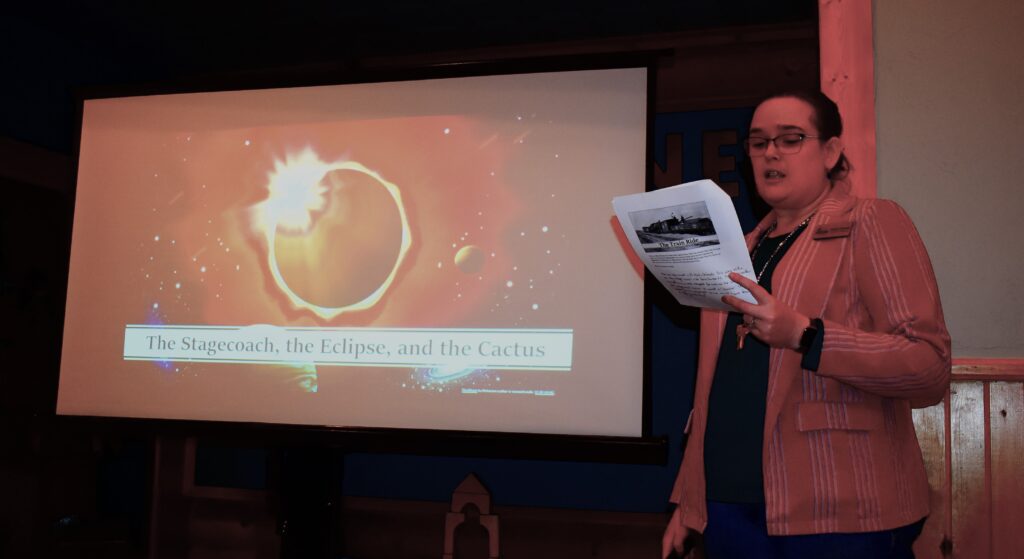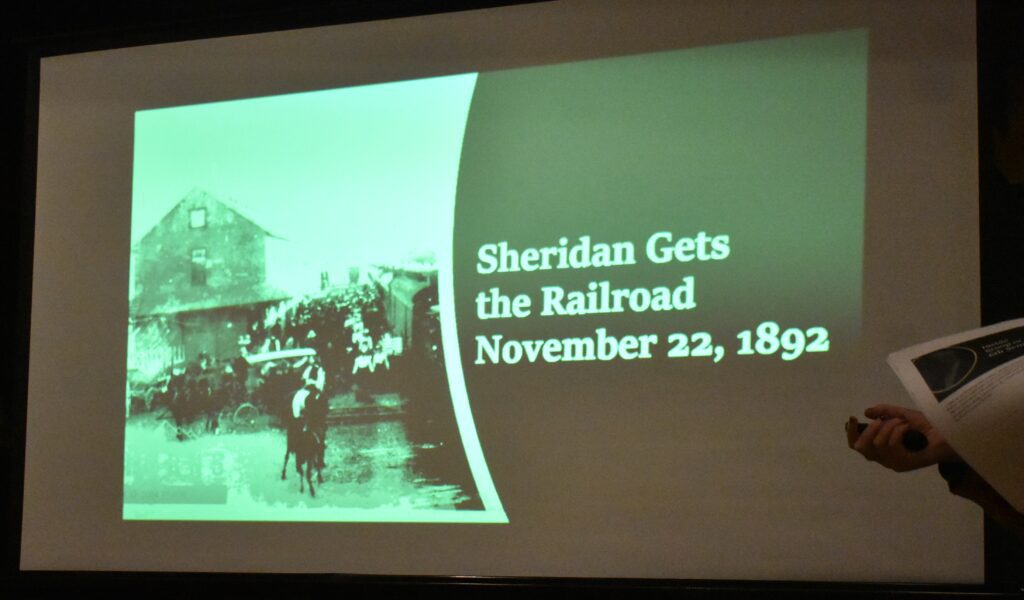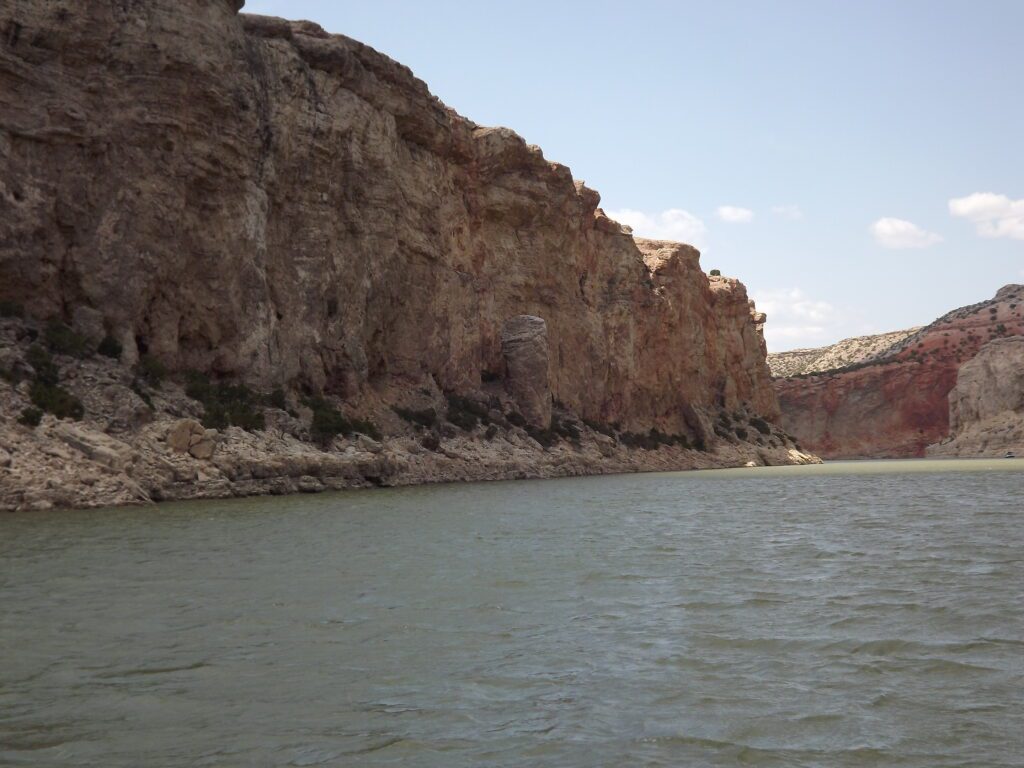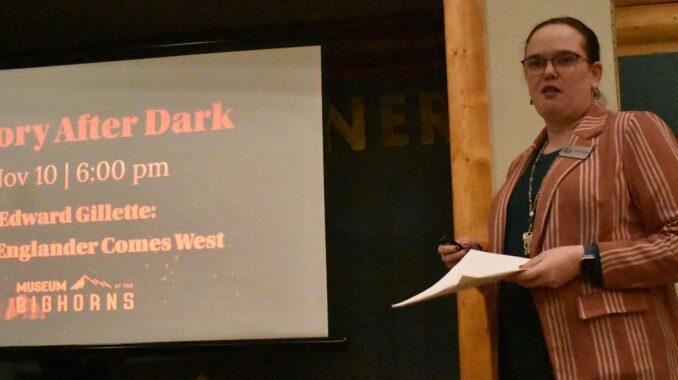The Museum of the Bighorns History After Dark program on Thursday, Nov. 10, featured surveyor Edward Gillette, who helped to make Sheridan into a flourishing town. Jessica Knight Salzman, Collections Manager, gave the talk and slide show about the surveyor.
Gillette was born in Connecticut in 1854. He went to Yale University. “He hadn’t gone very far from home when he was young, but once he got to Wyoming, he never went back,” Salzman said
He first came west in 1878, when he was hired by the engineering department of the army to survey in New Mexico. Prior to that, he had never been further west than New York and Washington DC.
In his book, Locating the Iron Trail, which was published in 1925, Gillette describes the journey. He had eight days to travel from the east coast to New Mexico. It was an interesting trip. At first, the train he was riding on was boarded by a rowdy political organization, and whiskey bottles were passed around, and even a few bullets were fired through the top of the car.
The train line stopped in Colorado, and he had to take a two day stagecoach ride to New Mexico. That trip included a drunk stage driver who was running from the law, and a total solar eclipse. That added to the experience of the day.

While traveling on the stage, Gillette heard a crash, and saw the stagecoach wheel, which was not on the coach. He was riding in front with the driver, and the consequent wreck landed Gillette in a patch of cactus, and injured the driver. Gillette, a greenhorn, fixed the wheel and drove the stage to it’s next stop. But, through it all, he eventually arrived in the West.
Salzman said:
He was later hired to survey the routes for the railroad that was pushing west. His main job was finding the most affordable routes and saving the railroad money. He had to take into account the grades, rivers to be crossed by building bridges, and miles of track. His first stop was in a place called Donkey Town.
He surveyed the railroad route to Sheridan, and the first train came to Sheridan in November, 1892.

Gillette continued surveying north, including him and another man taking a winter journey in March of 1891 up Bighorn Canyon on the frozen over Bighorn River. The canyon walls ranged in height from a few hundred feet to 3000 feet. The canyon is 55 miles long, and there is no shore line, the water coming right up against the steep rock walls. At times the temperature fell to 20-degrees below zero. He was the first white man to explore the canyon.

Gillette also explored the Yellowstone area before it became a National Park, and there he met Theodore Roosevelt before he was elected president. According to his book, they ate supper together at Old Faithful Inn.
He surveyed in the Big Horn Mountains, and discovered and named Dome Lake, and built a cabin there. In 1899 his surveying even took him into Alaska.
One interesting story that Salzman shared was Gillette’s account of Lake DeSmet and the Lake DeSmet sea serpent. When he first discovered the lake it was a “small, brackish body of water.” However, it was decided that with a little diverting of fresh water it would make a fine reservoir. Gillette had the job of buying the surrounding lands from the ranchers, one of whom was a Mr. Barkey.
One day Barkey and his wife excitedly told Gillette of their sighting of two ‘sea serpents’ that made a great commotion in the water swimming, “as fast as a horse could trot.” When asked to describe them Mrs. Barkey said they looked like, ‘telephone poles with lard buckets attached.’

Gillette married Hallie Coffeen, daughter of Henry Coffeen, in 1893. They lived on Coffeen Avenue, and Gillette died in 1936 at age 81, and is buried in the Sheridan cemetery.
Gillette, an eastern ‘tenderfoot’ made many contributions to Sheridan, Gillette and the state of Wyoming.
Last modified: November 11, 2022





